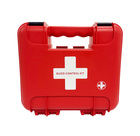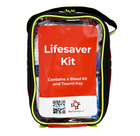First Aid for Degloving Injuries: Immediate Response and Management
A degloving injury is a severe traumatic incident where a large section of skin and underlying tissue is torn away from the muscles, tendons, or bones beneath. This type of injury exposes the affected area, often leading to significant blood loss, intense pain, and a high risk of infection. Immediate and appropriate first aid is crucial for improving recovery chances.
Immediate Actions for Managing Degloving Injuries
The first step in managing a degloving injury is to call for emergency medical assistance immediately. These injuries require urgent medical attention due to their severity. While waiting for emergency responders, follow these steps:
1. Control the Bleeding
Apply direct pressure to the wound using a clean cloth or sterile dressing. If bleeding is severe and uncontrollable, a tourniquet may be necessary. Place the tourniquet above the injury site, but use it cautiously to avoid causing additional damage.
2. Prevent Infection
Cover the wound with a sterile, non-stick dressing or a clean cloth. Avoid cleaning the wound yourself, as this could worsen the injury. If possible, carefully collect any torn skin or tissue, wrap it in a clean, dry cloth, and place it in a waterproof bag. Keep the bag cool by placing it near ice, but avoid direct contact with the ice to prevent further tissue damage.
3. Keep the Injured Person Calm and Still
Help the injured person lie down and, if possible, elevate the affected area to reduce swelling and bleeding. Reassure them to maintain calm and reduce the risk of shock. Monitor for signs of shock, such as pale, clammy skin, rapid breathing, or a weak pulse. Keep the person warm and comfortable while waiting for emergency medical services to arrive.
Conclusion
Understanding how to manage degloving injuries effectively can significantly impact recovery and outcome. By following these first aid guidelines, you can help control bleeding, prevent infection, and provide essential support until professional help arrives.







